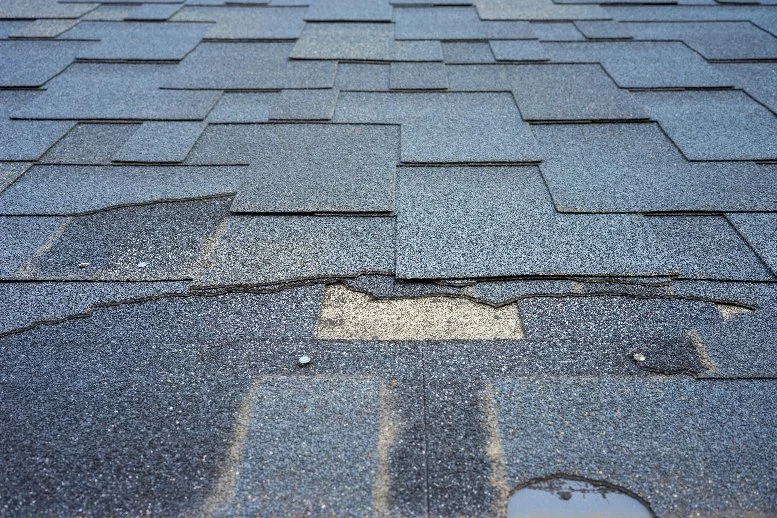Signs It's Time to Re-Shingle Your Roof
Your home's roof is one of the most important investments you can make. Not only does it protect your home from the elements, but it also adds aesthetic value to your property. However, after years of being exposed to harsh elements, your roof may begin to deteriorate.
One common problem that homeowners face is the need for re-shingling. The shingles that make up your roof can wear out, leaving your home vulnerable to leaks and other damage. In this post, we will discuss the signs that it's time to re-shingle your roof and what you should do if you notice any of these issues.
Age of Your Roof
The most obvious sign that it's time to re-shingle your roof is its age. Most roofs have a lifespan of around 20-25 years, depending on the quality of materials used and the level of maintenance that it receives. If your roof is approaching or exceeding this age, it's time to consider a replacement. Even if your roof appears to be in good shape, it's always better to be proactive and replace it before it becomes a major issue.
If you don't know the age of your roof, there are a few ways to find out. First, you can look for any manufacturer labels or installation information that may have been left behind. You can also check with local building departments and homeowners associations for records that may include the age of your roof. Finally, if all else fails, it's always best to hire a qualified professional to inspect your roof and provide an estimate of its age. This way, you can ensure that you are making the best decision for your home's future.
Missing Shingles
Another sign that it's time to replace your roof shingles is if you notice missing or damaged shingles. This can occur due to a number of reasons, including extreme weather conditions, improper installation, or aging.
If left unaddressed, missing shingles can lead to water damage and other structural issues. If you notice any missing or damaged shingles, it's best to have them replaced as soon as possible.
Cracked or Curled Shingles
If your shingles are cracked, curled, or buckled, it's a clear indication that they need to be replaced. This can happen when the shingles become old and brittle, or due to extreme weather conditions such as high winds or heavy snowfall. Cracked or curled shingles can allow water to seep through and cause significant damage to your roof and home.
If you are unable to tell if your roof shingles have been damaged from the outside, there are still ways to assess them from inside the home. Check for dark spots on interior walls or ceilings, which could indicate water damage caused by a leaking roof. Additionally, check for any gaps between the ceiling and wall where light may be coming in, which can also indicate leaking.
Finally, check for any visible signs of sagging or warping in the roof decking itself, which can be a sign that the shingles are no longer properly connected and need to be replaced. By being proactive and inspecting your roof from both inside and outside the home, you can help ensure it is up to par and able to protect your family for years to come.
Granule Loss
Shingles typically have a layer of granules on the surface that protects them from UV rays and enhances their fire-resistant properties. With age, these granules can start to wear off, leaving the shingles vulnerable to damage. If you notice excessive granule loss on your shingles, it's a clear sign that they need to be replaced. You may also notice granules in your gutters or downspouts. If you do, it's time to call a professional to assess the situation and determine if new shingles are needed.
When it comes to determining if granules are coming off of shingles, there are a few ways to tell. One way is to look for areas where the color of the shingle has faded significantly over time, as this could be an indication that granules have been lost. If you notice bald spots on your roof or streaks or lines of discoloration, these could also be signs that granules are eroding. Additionally, if you go outside after a rainstorm and notice piles of small granular material on the ground below your shingles, it's likely that they are coming off.
A Sagging Roof
If your roof appears to be sagging, it's a clear indication that it's time for a re-shingling. Sagging roofs can occur for several reasons, including water damage, rotting wood, or poor installation. If left unchecked, a sagging roof can lead to more severe damage to your home's structure. It's important to address this issue as soon as possible to avoid any significant damage to your property.
If you notice any signs that your roof is sagging, it's important to call a repairman right away. A professional such as JWF Roofing will be able to assess the damage and determine the best course of action. They can also provide advice on whether or not re-shingling is necessary and if so, they can ensure that it is done correctly. Additionally, they can identify any other issues with your roof and make the necessary repairs as well.
Your home's roof is a critical component that plays a vital role in protecting your home and family. By being aware of these signs, you can identify when it's time to re-shingle your roof and keep your home safe from potential damage.
If you notice any of these indications, it's best to call in an experienced professional to evaluate your roof's condition and provide you with the necessary guidance and solutions. Remember to always prioritize routine maintenance to avoid any catastrophic damage to your home.


